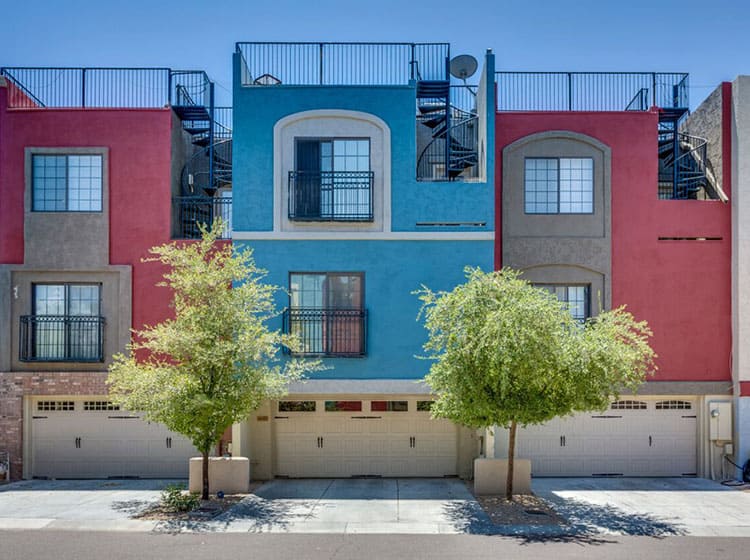Distinguishing Between Exterior And Interior Paint: Major Distinctions And Their Uses
Distinguishing Between Exterior And Interior Paint: Major Distinctions And Their Uses
Blog Article
Author-Ellis Meyers
When you're selecting between interior and exterior paint, it's important to recognize their essential differences that affect both efficiency and aesthetic appeals. Interior paints are crafted for lower VOC degrees and smoother coatings, making them excellent for indoor spaces, while outside paints are created to endure harsh weather and UV exposure. Each kind serves a distinctive objective, however understanding when to utilize one over the other can greatly affect your task's end result. So, what aspects should you consider when making your option?
Composition and Formulation
When picking in between exterior and interior paint, comprehending their structure and formula is crucial. Interior paints usually consist of a reduced quantity of unpredictable natural compounds (VOCs), making them much safer for indoor air high quality. You'll observe they commonly have a smoother finish, which improves their ability to stand up to spots and allows for much easier cleaning. They're designed to endure the rigors of interior atmospheres, consisting of varying moisture levels and temperature variations.
On the other hand, outside paints are created to endure harsher conditions. They typically include greater degrees of pigments and additives to stand up to fading from UV rays, along with to avoid mildew and mold and mildew development. Their structure consists of much more binders and materials, which give far better attachment to surface areas subjected to the components. This makes certain the paint can endure rainfall, snow, and changing temperatures without peeling or cracking.
Performance and Sturdiness
Evaluating performance and resilience is essential when choosing between exterior and interior paint. Interior paint is developed for surfaces that experience much less deterioration. It commonly withstands fading and scuffing, making it suitable for living areas and bed rooms. Nonetheless, house painters may not hold up well in high-moisture locations like bathroom and kitchens without appropriate solution.
On the other hand, outside paint deals with harsher problems. It's crafted to stand up to UV rays, rain, and temperature changes. This kind of paint commonly includes ingredients that avoid mold and mildew and mildew growth, guaranteeing durability in various environments. When you use outside paint, you can anticipate it to last a number of years longer than indoor paint, provided it's applied appropriately.
An additional vital difference lies in the coating options. Inside paints usually have a selection of finishes for aesthetic allure, while outside paints prioritize durability over luster. If you're looking for something that can handle the elements, outside paint is your best choice.
On the other hand, if you're focused on indoor visual appeals with much less worry for extreme conditions, interior paint might be ideal. Inevitably, your choice should align with the particular demands of the atmosphere.
Aesthetic Considerations
A fresh coat of paint can transform a room, but aesthetic factors to consider play an essential role in your option in between interior and exterior alternatives. When you're choosing paint, think about the mood you wish to develop. Inside paint permits you to explore a bigger variety of colors and coatings, enabling you to reveal your individual design and boost your home's atmosphere. Whether you go with soft pastels or vibrant tones, the appropriate indoor paint can make your rooms really feel comfortable, dynamic, or peaceful.
On https://www.realsimple.com/home-organizing/home-improvement/painting/front-door-colors-boost-home-value , exterior paint needs to line up with your home's style and the surrounding setting. Below, you're not simply making a design declaration; you're also considering aesthetic appeal. Choosing colors that harmonize with your area can boost your home's value and aesthetic appeal. Remember that outside paint is additionally based on fading and climate modifications, so choosing an ageless shade can conserve you from constant repainting.
Ultimately, think about how each option fits your vision. By straightening your paint option with your preferred aesthetic, you can develop rooms that reflect your personality while preserving performance.
Conclusion
When it pertains to selecting paint, understanding the vital distinctions in between exterior and interior choices is essential. Inside paints focus on aesthetic appeals and reduced VOCs, making them excellent for boosting your indoor spaces. In contrast, outside paints are designed for longevity and weather condition resistance, shielding your home from the aspects. By considering your specific demands and the setting, you can with confidence select the best paint to achieve the appearance and long life you desire for your area.
